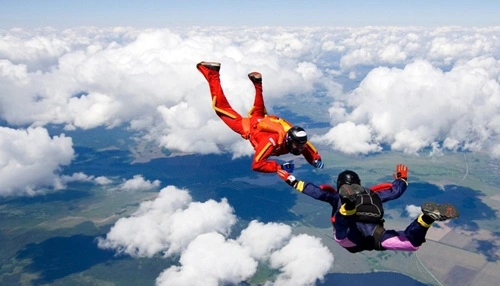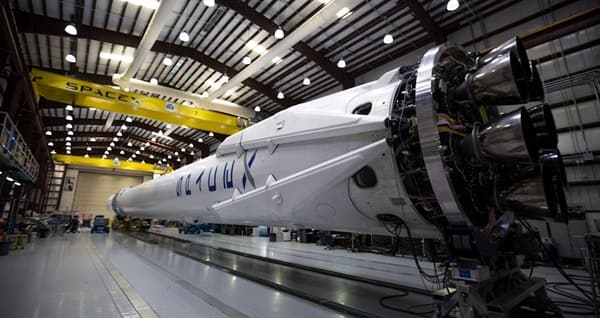Yes, it is illegal to skydive through clouds in the United States. Federal Aviation Administration (FAA) regulations prohibit skydivers from entering clouds due to safety concerns for both the skydiver and other aircraft. Violating these regulations can lead to penalties for both the skydiver and the pilot operating the aircraft.
Legal Framework for Skydiving Through Clouds
Federal Aviation Administration (FAA) Regulations
Skydiving in the United States is governed by FAA regulations, specifically Part 105 of Title 14 of the Code of Federal Regulations (CFR). These rules establish strict guidelines to ensure the safety of skydivers and other airspace users.
1. Prohibition of Skydiving Through Clouds:
- FAA regulations require clear visibility for all skydiving operations. According to 14 CFR § 105.17, skydivers must have sufficient visual reference to the ground to determine their altitude and landing zone.
- Jump pilots are prohibited from releasing skydivers if weather conditions, such as cloud cover, do not meet minimum visibility requirements.
2. Minimum Visibility Requirements:
- Skydiving must adhere to Visual Flight Rules (VFR). The FAA mandates a minimum horizontal visibility of 3 miles and vertical separation from clouds of at least 500 feet below and 1,000 feet above.
3. Aircraft Operator Responsibility:
- The pilot in command is responsible for ensuring that the skydive occurs under safe conditions and that skydivers are not released into clouds.
Why Is Skydiving Through Clouds Illegal?
The prohibition on skydiving through clouds exists primarily for safety reasons:
1. Collision Risk:
- Clouds obscure visibility, increasing the risk of midair collisions with other skydivers or aircraft. Small planes, drones, or other skydivers may be present in the area, and limited visibility makes it nearly impossible to avoid them.
2. Navigation Challenges:
- Skydivers rely on visual references to determine their location, altitude, and proximity to the landing zone. Clouds remove these critical references, increasing the likelihood of off-target landings or injuries.
3. Weather Unpredictability:
- Clouds may conceal dangerous weather conditions, such as turbulence, strong winds, or updrafts, which can destabilize a skydiver or delay parachute deployment.
4. Regulatory Oversight:
- The FAA enforces airspace safety to protect both skydivers and other aircraft. Skydiving through clouds violates controlled airspace rules, disrupting aviation safety.
Penalties for Violating FAA Regulations
Violating FAA regulations by skydiving through clouds can result in significant consequences for both skydivers and pilots:
1. Civil Penalties:
- The FAA may impose fines ranging from $1,000 to $25,000, depending on the severity of the violation and whether it jeopardized public safety.
2. Pilot Sanctions:
- The pilot of the aircraft may face suspension or revocation of their pilot’s license for allowing skydivers to jump under unsafe conditions.
3. Criminal Liability:
- If the violation results in injury, death, or significant damage, the parties involved may face criminal charges.
4. Insurance and Liability Issues:
- Skydiving operators and pilots may lose liability insurance coverage or face lawsuits if accidents occur due to unauthorized jumps through clouds.
Recent Cases and Updates
1. California, 2023:
- A skydiving operator was fined $15,000 after releasing skydivers during overcast conditions, resulting in a near-miss with a small aircraft.
2. Florida, 2024:
- The FAA suspended the pilot license of a jump plane operator for violating cloud separation requirements during a tandem skydive operation.
3. Texas, 2024:
- A skydiver sustained injuries after accidentally jumping through a dense cloud layer, leading to an investigation into the jump operator’s practices.
How Skydivers Avoid Cloud Violations
1. Weather Briefings:
Jump pilots and skydivers rely on detailed weather reports to assess conditions before each flight.
2. Real-Time Observation:
Pilots and skydiving instructors visually assess cloud cover and airspace visibility before initiating jumps.
3. Technology and Communication:
Skydiving operations use GPS and air traffic communications to ensure compliance with FAA regulations and avoid restricted airspace or hazardous conditions.
Common FAQs
Q1. Why can’t skydivers jump through clouds?
Ans: Skydivers are prohibited from jumping through clouds due to FAA regulations designed to prevent collisions, ensure proper navigation, and maintain airspace safety.
Q2. Can skydiving operators be fined for allowing jumps in cloudy weather?
Ans: Yes, the FAA can fine operators and pilots who violate cloud separation and visibility requirements.
Q3. Are there exceptions to the cloud rule for experienced skydivers?
Ans: No. All skydivers, regardless of experience level, must adhere to FAA regulations prohibiting jumps through clouds.
Q4. What are the risks of skydiving through clouds?
Ans: Risks include midair collisions, navigation errors, and exposure to unexpected weather conditions, all of which endanger the skydiver and others in the airspace.
Q5. What should a skydiver do if clouds appear unexpectedly during a jump?
Ans: Skydivers should rely on their training to maintain stability, monitor altitude, and deploy their parachutes at a safe height. Situational awareness and communication with ground personnel are critical.


